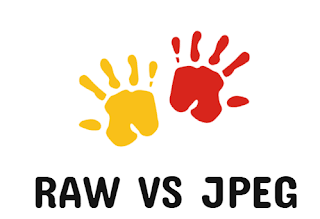Difference Between Raw and Jpeg
WHAT IS RAW IMAGE?
A RAW format file is basically an unprocessed file captured directly through the camera sensor. The image captured in RAW format is usually dark and flat in contrast as the file is not processed at all, as in the case of a JPEG file.
While viewing on your camera’s LCD screen, you would hardly find any difference between the RAW and the JPEG files. But the moment you open the files on your desktop or the laptop, you might me disappointed by the look of the RAW file because of its flat color tones and contrast.
At the first look, you might fall in love with the JPEG file, but the truth is that the RAW file holds all the details ranging from the contrast to white balance. Using the RAW file, you can completely change the white balance, brightness, sharpness, contrast, etc., of the image, without degrading the quality.
In order to access the RAW file on Adobe Photoshop or Adobe Lightroom, you would need to download the free Adobe Camera Raw plugin. Unlike JPEG format, the RAW format is not dependent on the camera to automatically process the image for you. I personally love to process the image on my own using the Adobe Photoshop software installed with the Adobe Camera Raw plugin. It gives you the freedom to digitally process the image as per your requirement, no restrictions at all.
A JPEG format file is basically a digital image which is processed within your camera using the raw data captured by the sensor.
As mentioned above, the camera initially captures the image in raw format and then processes the raw data to provide a finished product which is ready to be printed or to be shared on your social media platforms. During this process, the camera retains only the required details and disposes of the other details.
I would sum it up by saying that clicking in RAW format has its own benefits, which any day overpowers the advantages of clicking in JPEG format. The image file size and the requirement of post processing the image to make it look visually appealing should not stop you from clicking on the RAW format. Storage devices are affordable nowadays, so all you need to do is shoot, shoot and shoot in RAW format and take the power of post processing in your hands, instead of letting the camera do the processing for, as in the case of JPEG format.
Well, JPEG format has its own advantages for the photographer who click only for the purpose of uploading the images on social media to share among their group of friends. There might be a situation when your client asks you to simply click the images of an event and hand over the images the same day. In this situation, the client might not the familiar with the use of RAW files and you will have to shoot the event in JPEG format.

Comments
Post a Comment